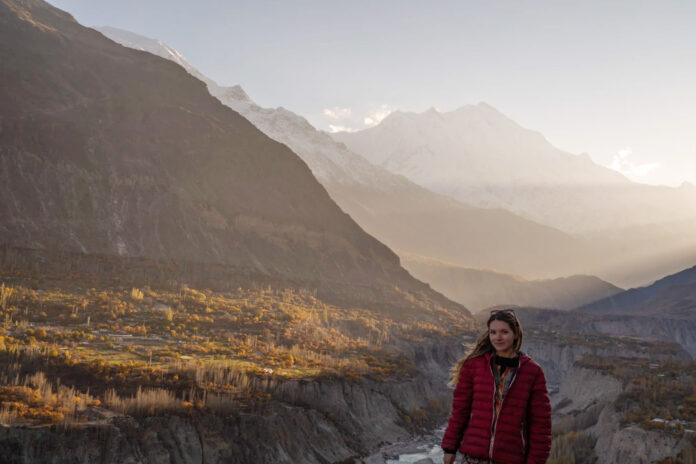Tourism significantly boosts economic status and global harmony by connecting different cultures, increasing local production rates and competition among tourism companies. It also reduces poverty and supports middle and lower-level economic communities. Tourism is predicted to reach $1.8 billion by 2030, strong tourist endeavours benefit any country by creating jobs, raising income, attracting diverse investments, facilitating tax collection, and improving GDP.
It contributes to economic growth across various sectors, increasing foreign exchange profits, spurring industrial expansion, and supporting travel and lodging industries. Rapid economic expansion attracts international business travellers, increasing developed nations’ foreign reserves.
As the world increasingly turns to Pakistan’s hidden gem, the future of tourism holds the promise of transformation, fostering economic growth, cultural exchange, and global understanding. Pakistan’s tourism potential requires a comprehensive management plan, investments, marketing, attractive packages, and infrastructure, with key factors including information availability, security, 24/7 emergency support, and a courteous workforce
Pakistan attracts 0.7 million tourists annually, a significant increase from the previous decade. In 2009, Pakistan ranked among 25 percent of the world’s most visited places based on its world heritage sites. According to the World Bank, Pakistan brought in $16 billion in tourist spending in 2022, and that amount is expected to rise to $30 billion by 2033. The travel and tourism sector’s total contribution to Pakistan’s GDP was 5.9 percent in 2022 and 4.2 million jobs. With its diverse landscapes, historical treasures, and vibrant culture, Pakistan is gaining popularity as a global travel destination.
Pakistan is a significant site for prehistoric archaeological research, containing ancient civilizations like the Gandhara Civilization and the Indus Valley Civilization, and the Mughal Empire. The Gandhara Civilization, linked to an ancient kingdom, is considered the sixth most beautiful area on earth. The Indus Valley Civilization, linked to the Bronze Era, was established on a 1.2 million km area with an estimated population of 5 million. Samples, antiques, and collections from these civilizations are housed in various museums in Pakistan.
Religious tourism in Pakistan involves visiting holy places for worship and spiritual pleasure. The country has a rich Islamic heritage and diverse religious heritage from other religions. The Kalash people, animists with ancient Albanian roots, have a unique culture with captivating festivals. Gurdwaras’ holy place in Nankana Sahib and Hasan Abdal are a significant persuasion site for the Sikh community. The Kartarpur Corridor connects the Dera Baba Nanak shrine in northwest India to Gurdwara Darbar Sahib in Pakistan, believed to be a place of Sikhism foundation. Other notable shrines in Pakistan include those of Shah Abdul Latif Bhitai, Lal Shahbaz Qalandar, Data Ganj Bakhsh Ali Hujwairi, Hazrat Baba Fariduddin Ganj-e-Shakar, Mian Mir, Shah Hussain, and Bahauddin Zakaria.
Pakistani culture values sports, with cricket being the favourite. The Pakistan Sports Board aims to enhance competition, maintain international standards, and manage sports in Pakistan. The Board supports players and associations in participating in sports. Field hockey, cricket, kabaddi, and squash attract international tourists. Pakistan’s diverse ecosystem, including dunes, mountains, deserts, and forests, is protected by national parks, wildlife sanctuaries, game reserves, and community-controlled hunting areas. With over 668 bird species, Pakistan offers nature-based tourism activities like trekking, mountain biking, mountain climbing, whitewater rafting, jeep safaris, trophy hunting, fishing, and wildlife watching. Cultural festivals and fairs provide excellent tourism opportunities, such as Shandur Polo, the Silk Route fair, the Kalash dance festival, the water sports festival, and various food festivals. Adventure tourism offers various opportunities, including the Karakoram Range, Baltoro Glacier, Chitral Valley, and Deosai National Park. These regions attract mountaineers, trekkers, and nature enthusiasts, offering challenging and rewarding experiences.
The northern part of Pakistan features some of the world’s most beautiful scenic areas, including Swat, Kalam, Malam Jaba, Shangla, Balakot, Galyat, Murree, Chitral, Gilgit Baltistan, Hunza, Kaghan, Naran, and Neelam valley. The country has an inordinate diversity of animals and plants, with five of the highest peaks in the world, including K-2, Nanga Parbat, Gasherbrum-I, Broad Peak, and Gasherbrum II. The Karakoram Highway connects Pakistan to China, offering stunning views of snow-capped peaks and valleys.
The Kaghan Valley and Neelum Valley attract nature enthusiasts. The Makran Coastal Highway, stretching along the Arabian Sea in Balochistan, presents a scenic route for road trips, allowing travellers to explore the pristine beaches and coastal landscapes. The Hingol National Park, with its diverse flora and fauna, is a testament to the country’s ecological richness. Lahore, a Mughal architecture treasure, and Karachi’s bustling bazaars showcase Pakistan’s urban life.
Pakistan’s tourism industry has potential to attract both visitors and the investors, but fears several challenges. A research report by TDAP identifies several issues, including security issues, negative media portrayal, lack of supportive infrastructure, poor development policies, inadequate facilities, lack of government support, and low investment. Other issues include shortages of trained staff, lack of services, insufficient equipment, lack of interest in meeting visitor needs, and haphazard price hikes. Authorities should play a more active role in tourism development, ensuring tourists obtain visas and relevant information promptly.
Challenges and security concerns remain significant for Pakistan’s tourism sector, with internal conflicts and geopolitical tensions contributing to a perception of instability. Efforts to promote tourism include infrastructure development, the ‘Brand Pakistan’ campaign, international collaborations with travel agencies and organizations, specialized tourism packages, and community involvement.
As the world increasingly turns to Pakistan’s hidden gem, the future of tourism holds the promise of transformation, fostering economic growth, cultural exchange, and global understanding. Pakistan’s tourism potential requires a comprehensive management plan, investments, marketing, attractive packages, and infrastructure, with key factors including information availability, security, 24/7 emergency support, and a courteous workforce.























